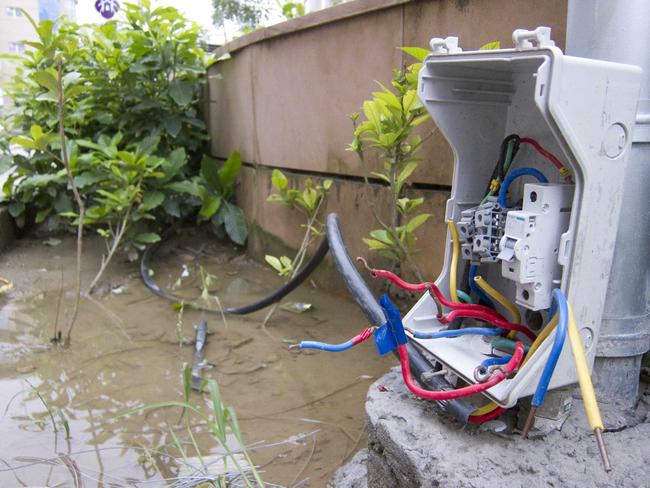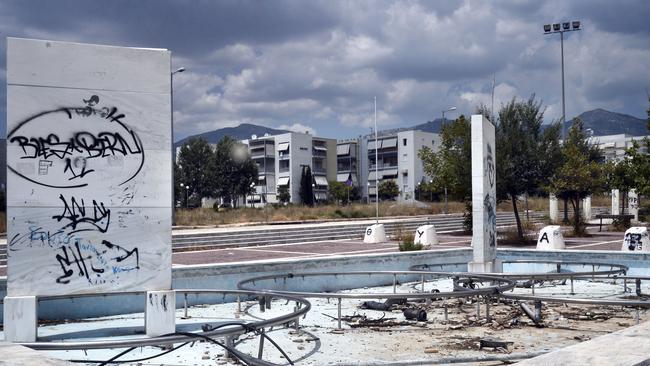Worst athletes’ villages in Games history amid concerns over Rio 2016 accommodation
IT sounds like our Olympians could be in for a rough ride in Rio. But they won’t be the first to endure testing living conditions at a major event.

Olympics
Don't miss out on the headlines from Olympics. Followed categories will be added to My News.
ATHLETES at Rio 2016 won’t be the first to discover the life of an Olympian isn’t exactly glamorous.
Serious concerns have emerged about the state of the athletes’ village less than two weeks out from the Games, with Australia holding off on moving into the accommodation due to safety and hygenie concerns.
The decision was announced by Australian team chief Kitty Chiller after management undertook a series of tests that revealed water leaks, unlit stairwells and blocked toilets.
It’s not the first time a Games has been blighted by such concerns. We look back at some of the worst and weirdest athletes’ villages.
2014 SOCHI WINTER OLYMPICS
Despite a rumoured budget of $US50 billion, Russia’s recent Winter Olympics were plagued by controversy and the state of accommodation was a major bugbear.
Athletes and journalists took to social media to report some of the unpleasant and, in many cases, unsafe living conditions before and during the event.
American Olympic star Johnny Quinn almost became the victim of a faulty lock, having to use his bobsleigh training to escape after getting trapped in his shower.
...With no phone to call for help, I used my bobsled push training to break out. #SochiJailBreak pic.twitter.com/apZRefgvCO
— Johnny Quinn (@JohnnyQuinnUSA) February 8, 2014
Other complaints ranged from the size of the beds, to undrinkable water, to some truly weird bathroom designs.
Chara is too tall for the twin bed in Sochi? Throw a foot rest at the end #Problemsolved #sochiproblems pic.twitter.com/sR4FV7L8g8
— Pure Hockey (@PureHockey) February 7, 2014
A lot of complaints about the accommodations. This is the foyer of my apartment. #SochiProblems pic.twitter.com/gKnxCywKF0
— Mark Connolly (@MarkConnollyCBC) February 6, 2014
We told Bob Costas not to wash his face with the water. #SochiProblems #SaveBobCostasEye #pinkeye pic.twitter.com/HSwcLONzyF
— Sochi Problems (@SochiProbz) February 7, 2014
Water restored, sorta. On the bright side, I now know what very dangerous face water looks like. #Sochi #unfiltered pic.twitter.com/sQWM0vYtyz
— Stacy St. Clair (@StacyStClair) February 4, 2014
Seeing double in the Gentlemen's Loo at the Olympic Biathlon Centre #Sochi pic.twitter.com/a1HoilU9zn
— Steve Rosenberg (@BBCSteveR) January 20, 2014
This tweet from reporter Dan Wetzel pretty much summed up how desperate the situation became for many.
To anyone in Sochi: I am now in possession of three light bulbs. Will trade for a door handle. This offer is real: pic.twitter.com/7AeesqDi8Y
— Dan Wetzel (@DanWetzel) February 4, 2014
2010 DELHI COMMONWEALTH GAMES
When it comes to Games hosting disasters, India’s hosting of the 2010 Commonwealth Games takes the cake and the state of the athletes’ village was one of the biggest controversies.
With village construction well behind schedule, alarming images emerged in the weeks and days before the event began showing the flithy and unsafe state of the accommodation — featuring everything from disgusting bathrooms to animal footprints.



If the threat of shoddy construction or dengue fever wasn’t enough, athletes then suddenly had another dangerous hazard to consider — snakes.
A full-grown cobra had to be removed from one of the tennis venues, just days after a South African official claimed a venenmous snake was also found in a room earmarked for his country’s athletes.
Ever the optimist, Australian team chef de mission Steve Moneghetti wasn’t fazed.
“We come from a country that has the most venomous snakes in the world so if any country is prepared, it is probably us,” Moneghetti told reporters.
2004 ATHENS OLYMPICS
Like Delhi and now Rio, Athens was racing the clock the finish construction before the Games began.
They got there in the nick of time but the smell of drying paint remains a lasting memory for those who stayed there.
Many of the village’s trimmings remained unfinished and there were also concerns about a lack of security after reporters wandered unchallenged through the building blocks in the days leading up to competition.
Greece ultimately got the job done but, sadly, the Olympic village is a sight for sore eyes these days.

1980 LAKE PLACID WINTER OLYMPICS
If athletes at the 1980 Winter Games were looking for inspiration before competing, they weren’t going to find it in their bedrooms.
In the wake of the 1972 Munich terror attacks, Olympics officials wanted to ensure the athletes’ accommodation was as safe as possible. So they picked a facility set in a remote mountain location — used initially as sanatorium for sufferers of tuberculosis and then as part of a camp program for adult prison inmates.
The dreary rooms were about two metres, by four metres in size, with a toilet in the corner.
Sounds a bit prison-like, right? Yep, it pretty much was one with inmates relocated elsewhere for the duration of the Games. The buildings were converted into a medium-security prison after the Olympics and the facility in Ray Brook, New York is still in use today.

Originally published as Worst athletes’ villages in Games history amid concerns over Rio 2016 accommodation


